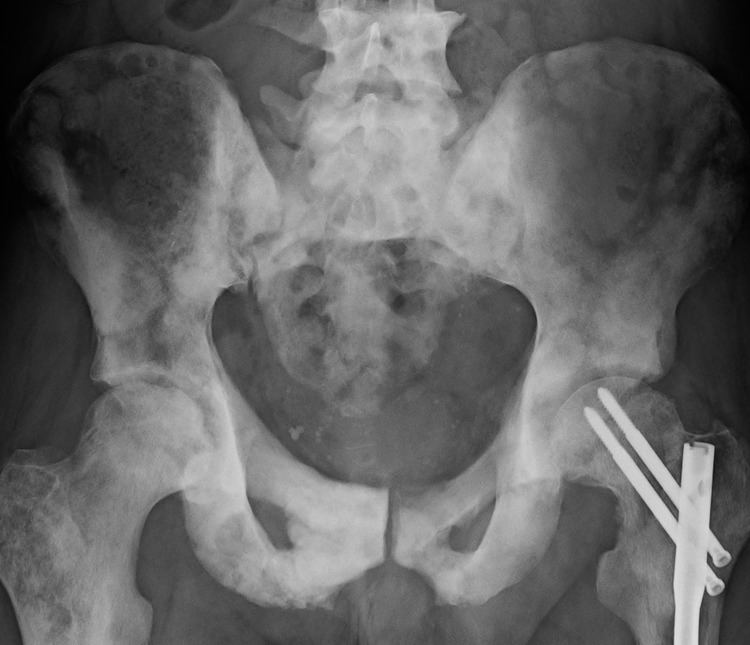Specialty medical genetics ICD-9-CM 756.52 MeSH D010026 | ICD-10 M85.8, Q77.4 DiseasesDB 15823 | |
 | ||
Osteosclerosis is a type of osteopetrosis that involves abnormal hardening of bone and an elevation in bone density. It can be a pathology, normally detected on a radiograph as an area of increased opacity; that is, where more mineral is present in the bone to absorb or deflect the X-ray beam. Localized osteosclerosis can be caused by injuries that compress the bone, by osteoarthritis, and osteoma.
It is associated with:
It can also be associated with Hepatitis C.
In the animal kingdom there also exists a non-pathological form of osteosclerosis, resulting in unusually solid bone structure with little to no marrow. It is often seen in aquatic vertebrates, especially those living in shallow waters, providing ballast as an adaptation for an aquatic lifestyle. It makes bones heavier, but also more fragile. In those animal groups osteosclerosis often occurs together with bone thickening (pachyostosis). This joint occurrence is called pachyosteosclerosis.
